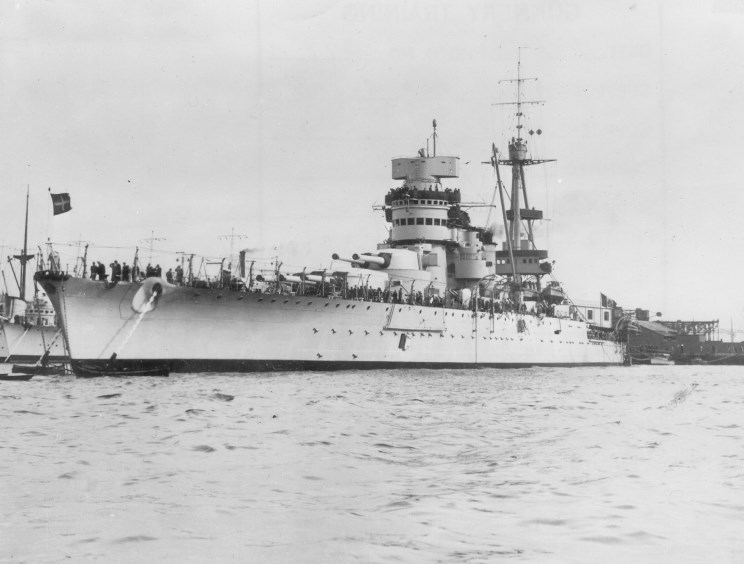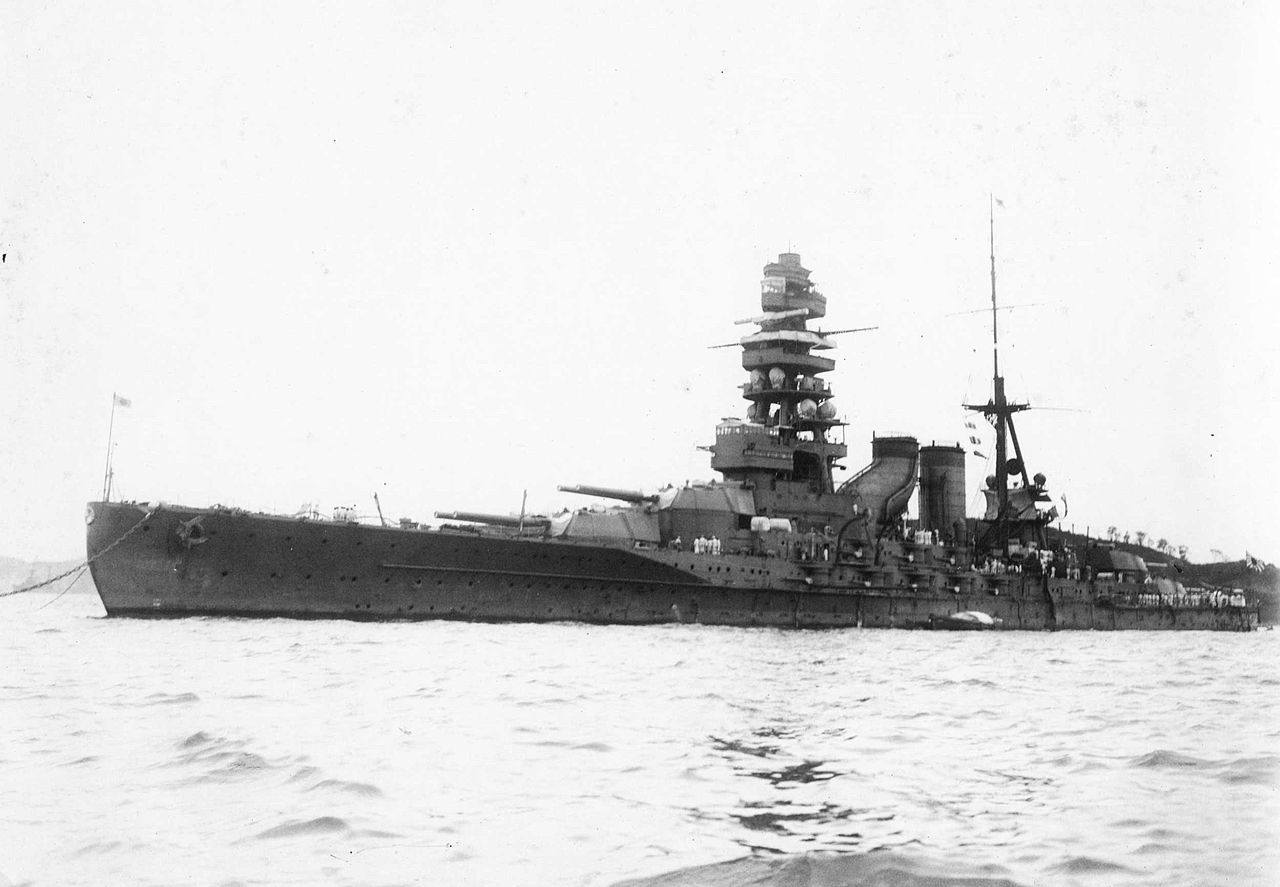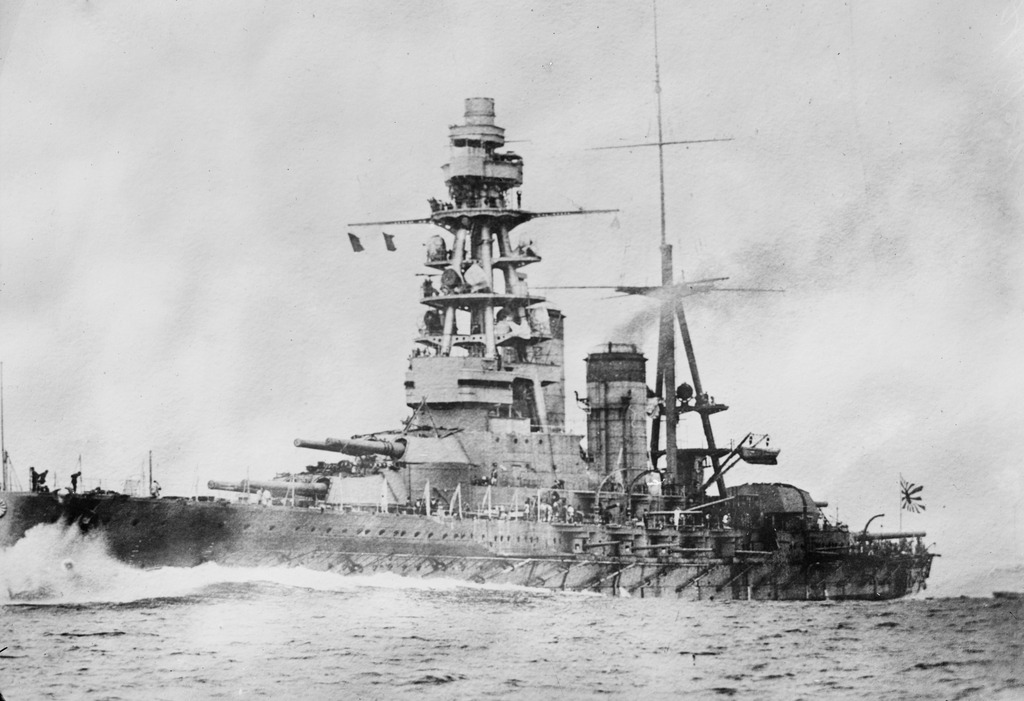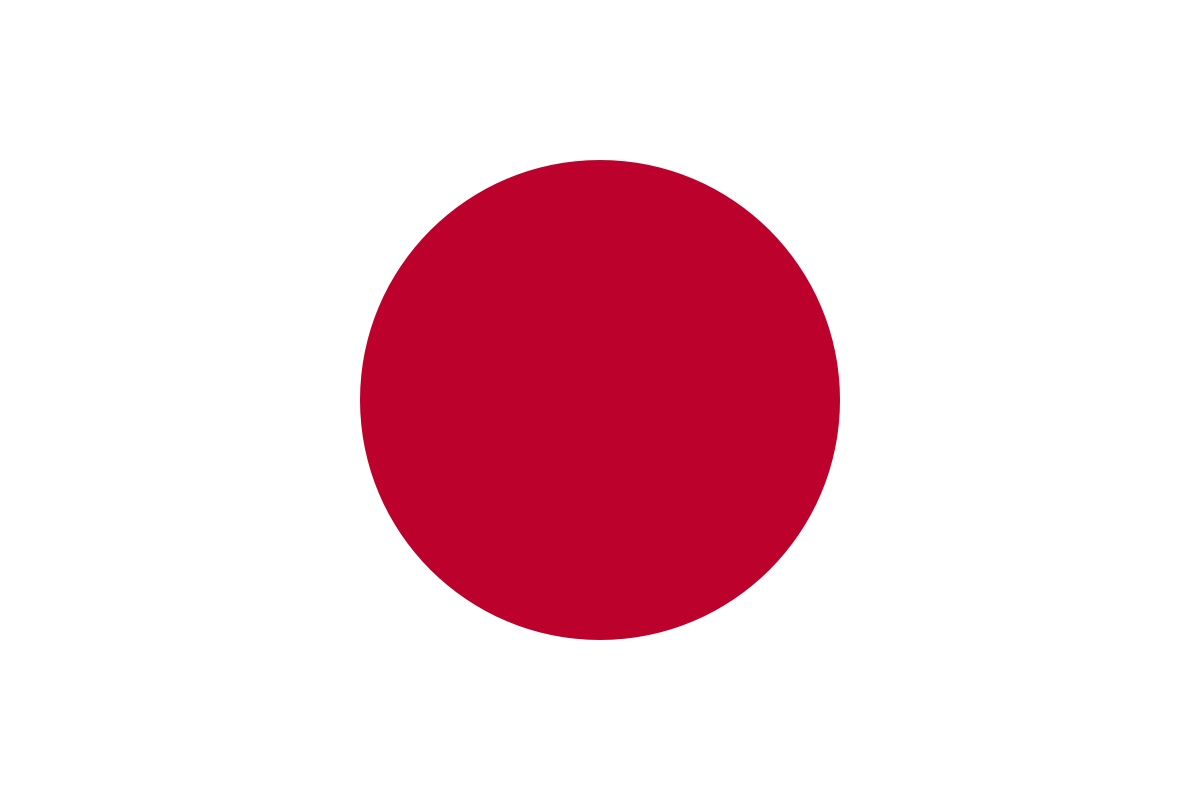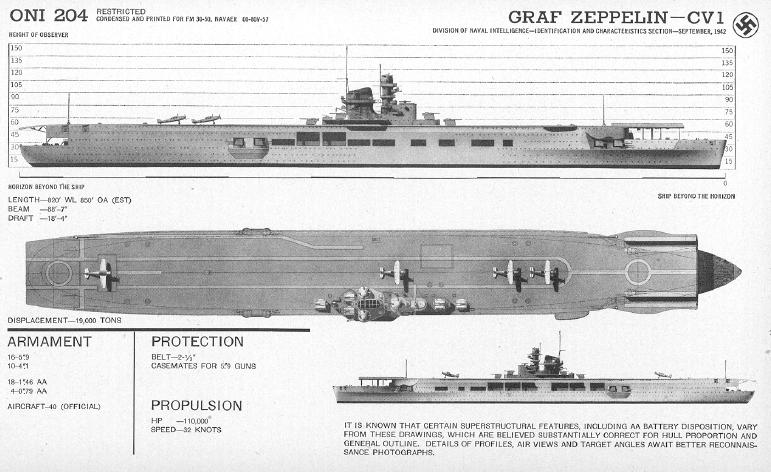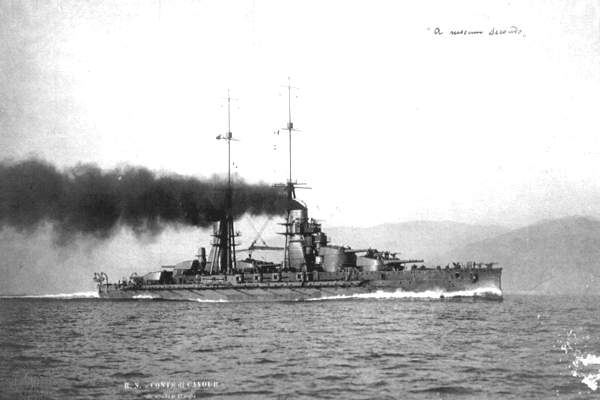Giulio Cesare
| Name | Giulio Cesare |
| Nationality | Italy (Details) |
| Period | World War I |
| Type | Battleship |
| SubType | Dreadnought |
| Warship Class | Conte di Cavour (Details) |
| Year Launched | 1911 |
| Year Commisioned | 1914 |
| Last Year Active | 1949 |
| Status | Sold |
| Source of Text | Wikipedia |
| Credit Link | Link |
History:
Giulio Cesare was one of three Conte di Cavour-class dreadnought battleships built for the Royal Italian Navy (Regia Marina) in the 1910s. She served in both World Wars, although she was little used and saw no combat during the 1st world war. The ship supported operations during the Corfu Incident in 1923 and spent much of the rest of the decade in reserve. She was rebuilt between 1933 and 1937 with more powerful guns, additional armor and considerably more speed than before.
Both Giulio Cesare and her sister ship, Conte di Cavour, participated in the Battle of Calabria in July 1940, when the former was lightly damaged. They were both present when British torpedo bombers attacked the fleet at Taranto in November 1940, but Giulio Cesare was not damaged. She escorted several convoys to North Africa and participated in the Battle of Cape Spartivento in late 1940 and the First Battle of Sirte in late 1941. She was designated as a training ship in early 1942, and escaped to Malta after Italy surrendered. The ship was transferred to the Soviet Union in 1949 and renamed Novorossiysk (Russian: Новороссийск). The Soviets also used her for training until she was sunk, with the loss of 608 men, when an old German mine exploded in 1955. She was salvaged the following year and later scrapped.
Both Giulio Cesare and her sister ship, Conte di Cavour, participated in the Battle of Calabria in July 1940, when the former was lightly damaged. They were both present when British torpedo bombers attacked the fleet at Taranto in November 1940, but Giulio Cesare was not damaged. She escorted several convoys to North Africa and participated in the Battle of Cape Spartivento in late 1940 and the First Battle of Sirte in late 1941. She was designated as a training ship in early 1942, and escaped to Malta after Italy surrendered. The ship was transferred to the Soviet Union in 1949 and renamed Novorossiysk (Russian: Новороссийск). The Soviets also used her for training until she was sunk, with the loss of 608 men, when an old German mine exploded in 1955. She was salvaged the following year and later scrapped.
Class:
The Conte di Cavour–class battleships were a group of three dreadnoughts built for the Royal Italian Navy (Regia Marina) in the 1910s. The ships were completed during World War I, but none saw action before the end of hostilities. Leonardo da Vinci was sunk by a magazine explosion in 1916 and sold for scrap in 1923. The two surviving ships, Conte di Cavour and Giulio Cesare, supported operations during the Corfu Incident in 1923. They were extensively reconstructed between 1933 and 1937 with more powerful guns, additional armor and considerably more speed than before.
Both ships participated in the Battle of Calabria in July 1940, when Giulio Cesare was lightly damaged. They were both present when British torpedo bombers attacked the fleet at Taranto in November 1940, and Conte di Cavour was torpedoed. She was grounded with most of her hull underwater and her repairs were not completed before the Italian surrender in September 1943. Conte di Cavour was scrapped in 1946. Giulio Cesare escorted several convoys, and participated in the Battle of Cape Spartivento in late 1940 and the First Battle of Sirte in late 1941. She was designated as a training ship in early 1942, and escaped to Malta after Italy surrendered. The ship was transferred to the Soviet Union in 1949 and renamed Novorossiysk. The Soviets also used her for training until she was sunk when a mine exploded in 1955. She was scrapped in 1957.
Both ships participated in the Battle of Calabria in July 1940, when Giulio Cesare was lightly damaged. They were both present when British torpedo bombers attacked the fleet at Taranto in November 1940, and Conte di Cavour was torpedoed. She was grounded with most of her hull underwater and her repairs were not completed before the Italian surrender in September 1943. Conte di Cavour was scrapped in 1946. Giulio Cesare escorted several convoys, and participated in the Battle of Cape Spartivento in late 1940 and the First Battle of Sirte in late 1941. She was designated as a training ship in early 1942, and escaped to Malta after Italy surrendered. The ship was transferred to the Soviet Union in 1949 and renamed Novorossiysk. The Soviets also used her for training until she was sunk when a mine exploded in 1955. She was scrapped in 1957.
Nationality:
Italy, a European country with a long Mediterranean coastline, has left a powerful mark on Western culture and cuisine. Its capital, Rome, is home to the Vatican as well as landmark art and ancient ruins. Other major cities include Florence, with Renaissance masterpieces such as Michelangelo’s "David" and Brunelleschi's Duomo; Venice, the city of canals; and Milan, Italy’s fashion capital.
Item created by: Lethe
on 2019-03-24 10:02:39
Last edited by: gdm on 2019-07-23 10:07:39
If you see errors or missing data in this entry, please feel free to log in and edit it. Anyone with a Gmail account can log in instantly.
Last edited by: gdm on 2019-07-23 10:07:39
If you see errors or missing data in this entry, please feel free to log in and edit it. Anyone with a Gmail account can log in instantly.


